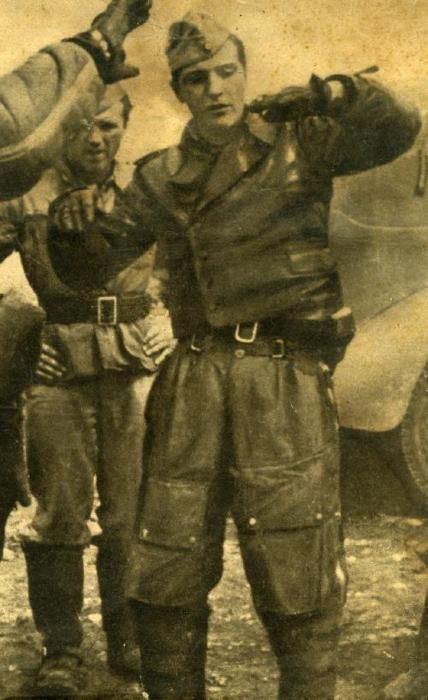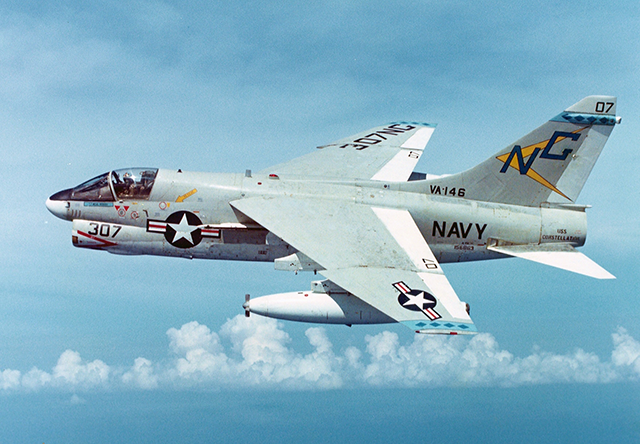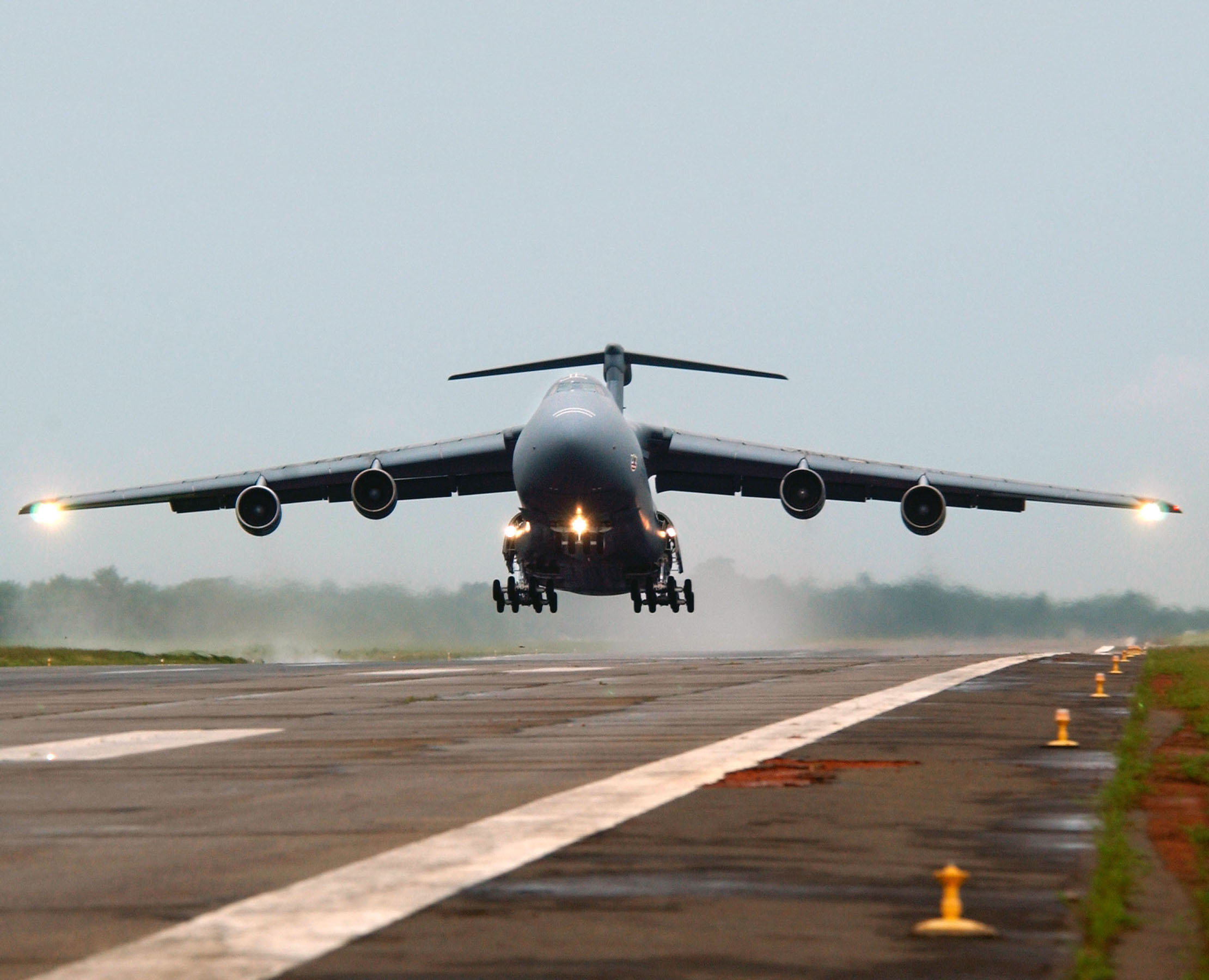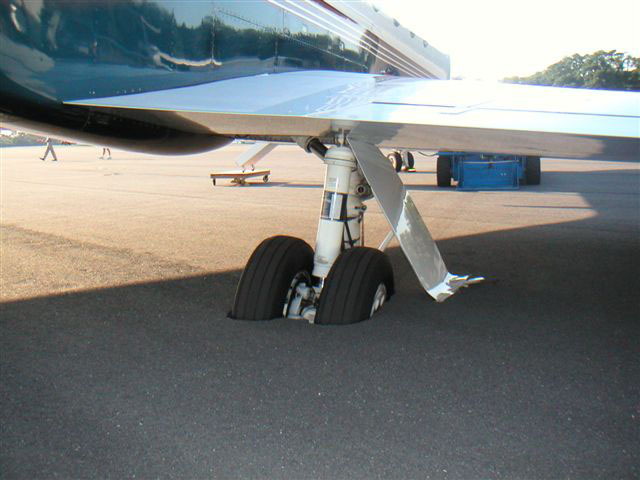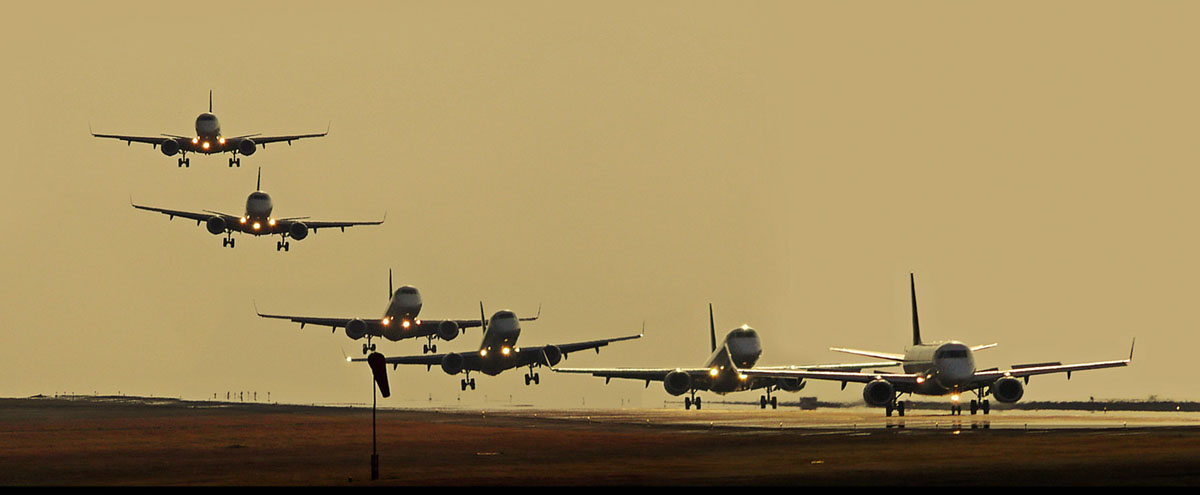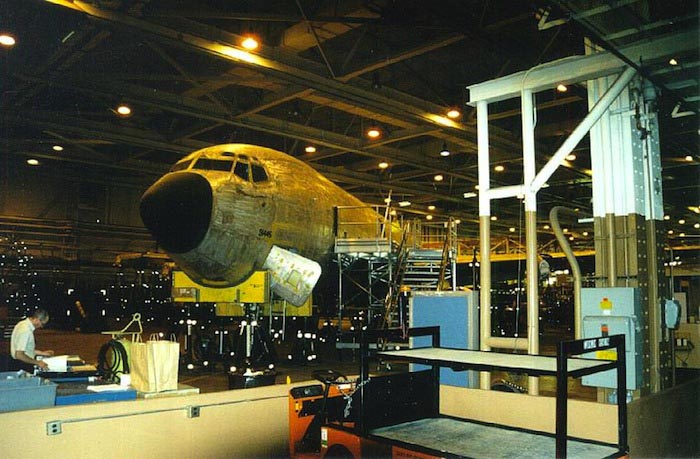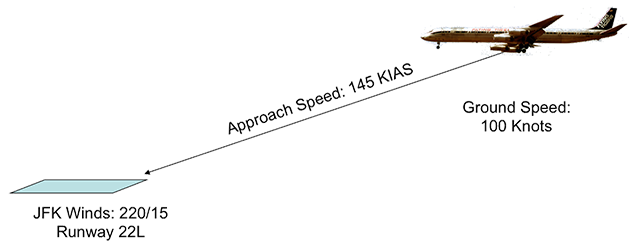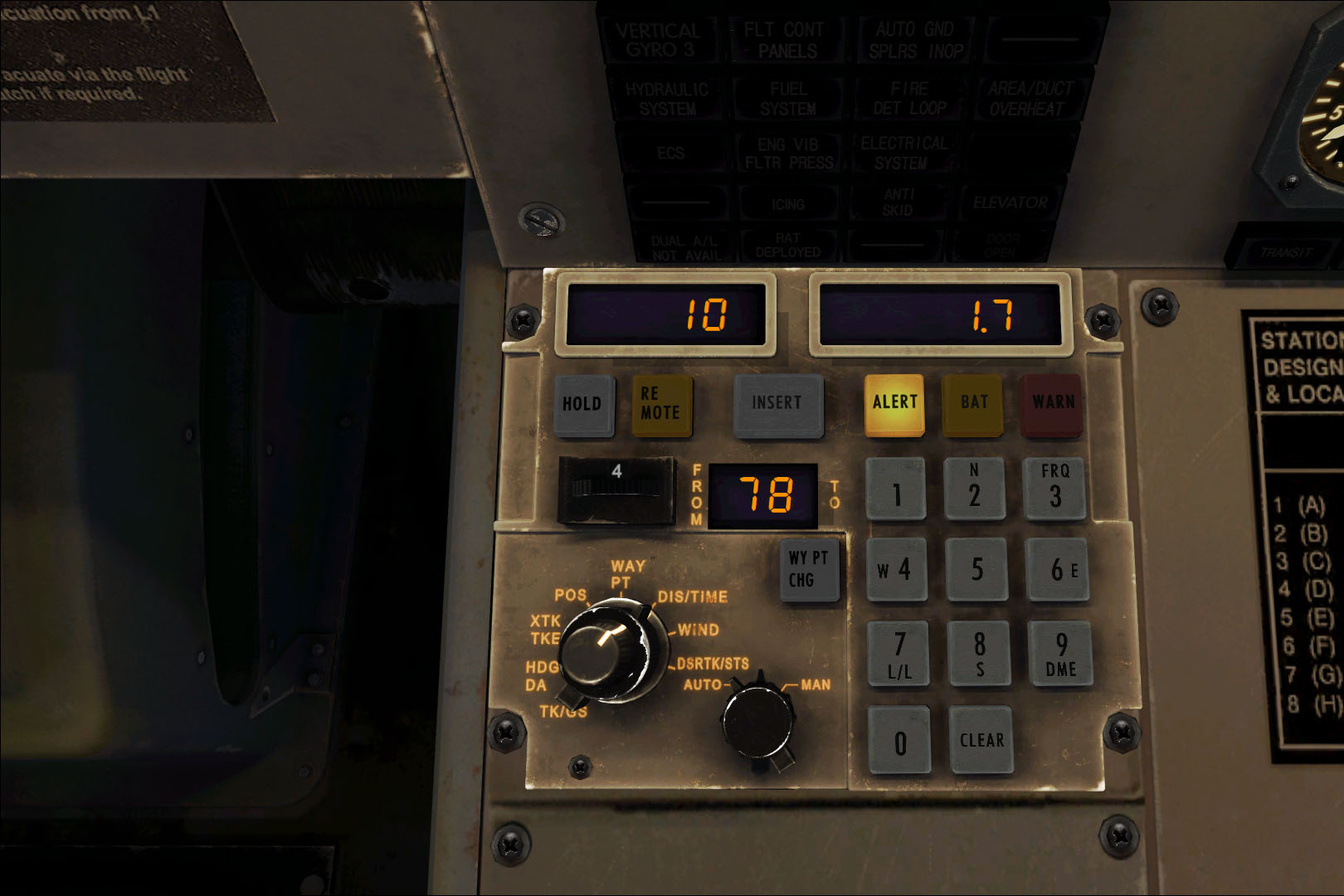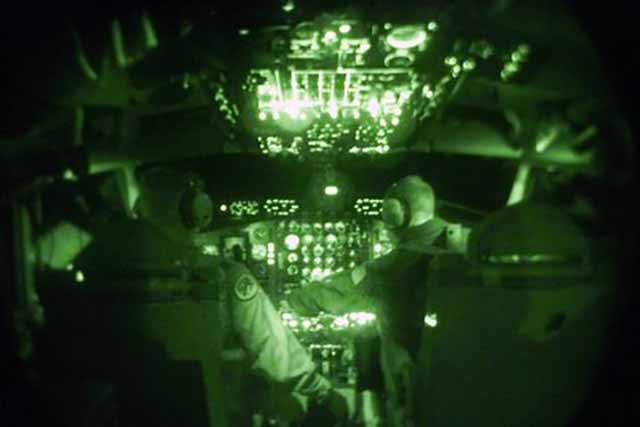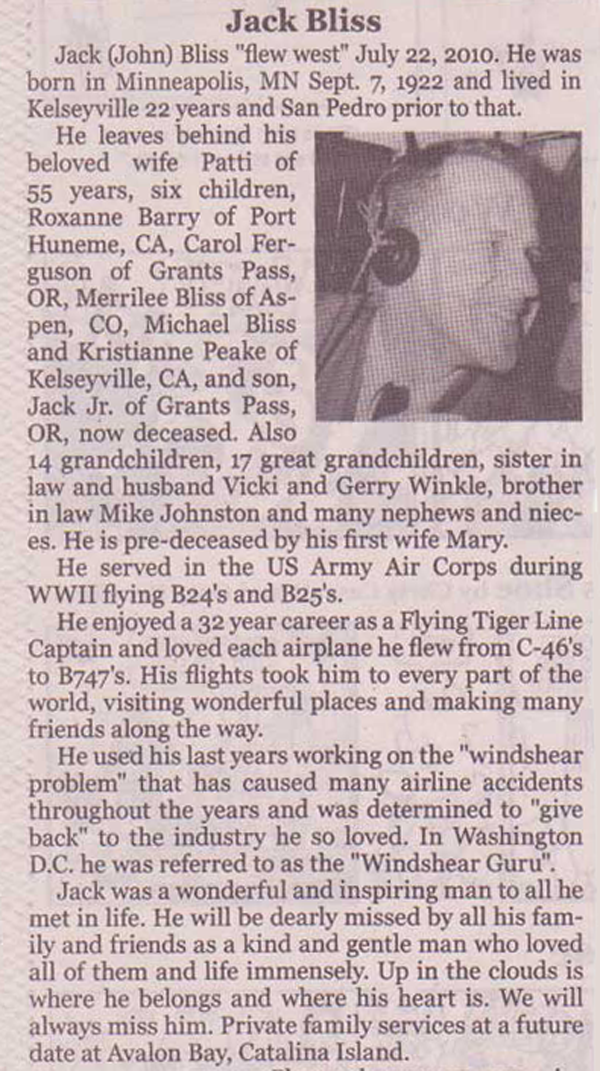"There I was, flat on my back, out of airspeed and out of ideas." I first heard that as an Air Force cadet with zero hours in my logbook. We cadets howled with laughter, but I don't think a lot of us understood what it meant. It would be a few years later when I found myself in an Air Force airplane upside-down, at a very low airspeed, worried about my wingman running out of speed and having us both fall out of the sky at the same time. The old fighter pilot's saying adds an adversary with a gunsight. Note to self: don't do that again.
— James Albright

Updated:
2019-07-17
And that is the point. We pilots like to tell stories about things that happened to us as a way of (1) entertaining our fellow pilots, (2) showing how brave we are, and, perhaps, (3) helping our fellow pilots to avoid a similar situation or at least learn from our mistakes.
Over the years I've written more than my share of stories, but often I connect these to current world aviation issues. If, for example, you want to learn about a recent edict from the FAA about landing distance, I have an article about that with a story about how I almost ran off a runway because of lousy weather reports on the part of the Air Force and lousy decision-making on my part. More about that: Wet or Contaminated? Every now and then someone tells me it was the story that made the lesson stick. I've found that to be true. Here are a few examples. The best example, however, is not mine.
1 — In the ready room: "Carrier Pressure"
2 — From one pilot to another: "That sinking feeling"

1
In the ready room: "Carrier Pressure"
Captain Wetherbee is a retired Navy fighter pilot and NASA space shuttle pilot with six trips in space, five as the commander. He writes in Controlling Risk in a Dangerous World that humans learn and remember through stories better than dry facts, numbers, and rules. Here is one of his best stories.
Here is an example about a story that likely saved my life. In 1979, I was a young and confident naval aviator, returning home from my first deployment with enough experiences to fill several lifetimes. I launched from the aircraft carrier and should have been landing on dry land for the first time in seven months, but the runway ignored its orders and hosted a thunderstorm just prior to my arrival at the welcoming ceremony. After executing an OK-3 Navy landing, demonstrating my superior skill, I made a bad decision on the wet runway and suddenly lost control of my $3 million, single-seat, light attack, A-7 Corsair aircraft.
As I was skidding sideways, headed for an embarrassing death, a colorful tale I heard six months earlier during our deployment flashed into my mind. In an instant, that story helped me save my airplane.
This was the setup for my impending accident. Our squadron had just completed a seven-month cruise aboard the USS John F Kennedy in the Mediterranean Sea. As we approached the continental US, we were ferrying our A-7s from the ship to our home base at Naval Air Station Cecil Field in Jacksonville, Florida. During flight operations at sea, the tires on our aircraft were routinely filled with much higher "carrier pressure" to withstand excessive forces during the arrested landings, or controlled crashes. For the fly-off operations, the downside of having higher carrier pressure in the tires was smaller contact area where the rubber meets the runway, resulting in reduced friction and less steering control during landing and rollout on shore.
After launching from the JFK, I joined the maintenance officer's wing for a formation flight to Cecil Field, directly through the heart of the worst thunderstorm I had experienced. Naval aircraft are built to take it. The bigger challenge was yet to come.
On arrival, we were notified the runway was wet. Normal prudence, when landing with carrier pressure on a wet runway, dictated that we should have dropped our tailhooks to make arrested landings. But, the arresting gear system at the field is much less efficient than the shipboard system. The requirement to reset the system after each arrestment would have delayed subsequent landings of the other low-fuel jets coming from the JFK. So my flight leader briefed a new plan to me on the radio. He would land first, and if he experienced difficulty in controlling his airplane on the wet runway, he would notify me, the rookie, to lower my tailhook for a safer arrested landing. If he experienced no problems, I would leave my hook retracted to allow subsequent planes to land expeditiously.
On my final approach, I watched my flight leader land, rollout, and taxi clear with no apparent difficulty. He later admitted to me that he did experience some slipping and sliding but decided not to tell me, thinking that the steering task wasn't too difficult. (Thanks, sir.) I landed on the 8,000-foot runway and had no problems for the first 6,500 feet. Just after I passed the long-field arresting cable, which represented my last opportunity to drop my hook, the automatic antiskid system in my wheels began to shunt hydraulic pressure away from my brakes to prevent lockup as the tires were beginning to hydroplane over the wet surface.
With my current speed and distance remaining and no braking available, I easily calculated I was about to depart the runway without slowing down. Betting that the antiskid system was failing, I decided to try my luck and deselect the system. Of course, I lost my gamble with the laws of physics on slick runways. I should have known what was coming. The antiskid system had been working exactly as designed, doing what it was supposed to do, keeping my steering in control. As quickly as I turned the system off, one tire caught friction while the other continued to slide. My airplane immediately turned ninety degrees to the left, and I was skidding sideways while continuing to track straight down the runway at forty knots, with my right wing pointed forward.
I found myself stable yet out of control, looking over my right shoulder at the end of the runway approaching quickly, without slowing down. After a few seconds, I realized my main wheel was headed directly for an arresting gear stanchion at the runway threshold and mud beyond that. If the wheel dug in, my sidewards momentum would flip the airplane on its back. A hilariously good story for other pilots in the ready-room and at my wake.
Instantly, another story I heard in the wardroom on the ship six months earlier flashed through my mind. An F-14 Tomcat pilot was telling us about a dumb action (his words) he took during his landing on a wet runway with carrier pressure in his tires. He blew a tire, lost control, spun around, and somehow ended up traveling straight along the centerline of the runway but backward. Without thinking, he reactively jammed both brake pedals to the floorboard. Bad idea. The rearward momentum of the center of gravity popped the nose of his aircraft up until the tail feathers of his exhaust pipe scraped along the runway. His other main tire blew. Both brakes seized, and the locked wheels ground themselves down to square nubs, as his airplane came to a stop in a spray of sparks.
His crippled plane had to be craned off the runway because they couldn't tow it on square wheels. Through all the laughter in the wardroom, he admitted, "Since I was going backward, rather than stepping on the brakes, all I had to do was go zone-5 afterburner on both engines." At the time, I joined the other pilots and laughed just as loudly at his incompetence. On the inside, though, I silently concluded I never would have thought of that now-obvious solution. What a great story.
Back to my impending death. Without forming any words or taking any time, my brain recalled the relevant part of the Tomcat driver's story, and the automatic processing in my mind quickly invented a solution. I waited until I was approaching the final taxiway in my sideways skid. As the off-ramp reached the two o'clock position relative to my nose, I applied full power to the engine.
The big, lazy turbofan spooled up with its usual delay, and by the time the taxiway was at my one o'clock position, sufficient thrust was beginning to build to push my airplane toward the taxiway. The plane exited the runway straight onto the centerline of the last taxiway before disaster. I retarded the throttle quickly, and the A-7 gently skidded to a stop, as if had planned my graceful slide all along.
After I got my heart rate below 100 bpm, I said a silent prayer thanking the F-14 pilot for telling his tale of misfortune. His story saved me.
Source: Wetherbee, pp. xv - xiv
2
From one pilot to another: "That sinking feeling"
Not every war story has to save a life to be useful, it could also save your career. The photo here is from 2006, both segments of my story are from before that. In each case, it pays to be paranoid about ACN vs. PCN. I learned my pavement paranoia while flying a desk.
Most Air Force pilots fly for organizations with a lot of infrastructure designed to keep the aircraft safe. One of those safeguards to ensure the aircraft do not get sent to airports that cannot support them. When I flew KC-135s, Boeing 707s, and Boeing 747s, someone will have made sure. Later on, flying Gulfstreams, that someone was me. But I never gave it much thought until I was a Program Element Monitor (PEM) at Headquarters USAF, The Pentagon. A PEM is basically an accountant who handles an element's operating, maintenance, and acquisition budgets. Our office handled all transport aircraft for the Air Force. I handled all the VIP aircraft. We also had PEMs for the C-5, C-130, C-141, KC-135, and KC-10.
Being surrounded by true tanker and airlift pilots was an eye opening experience for me. The Boeing 707s and Boeing 747s that I flew made use of tanker support quit a bit; we refueled to extend our range and duration in missions all over the world. The Boeing 747s and one of three types of Gulfstreams that I flew were tasked with supporting the White House as backup aircraft to Air Force One. These aircraft made a lot of use of the airlifters for support equipment. Here again we were "customers" of tanker and airlift support. I was surrounded by the actual operators in my Pentagon office.
The C-5 PEM was a very smart officer who had a good reputation in the office and had an easy going nature that I immediately took too. Every now and then someone would ask if he had "that sinking feeling" and there would be a few laughs. Finally I had to ask. He reluctantly told me.
"I was a pretty new as a C-5 aircraft commander but I was getting more than just the normal flights so I was thinking that not much was out there that could surprise me. I got sent to a small airport in Central America that I had never been to but Mother MAC [Military Airlift Command] said it was okay so we went. The airplane was empty and our job was to land, pick up a load of Army tanks, and then takeoff and come home. It was going to be a long day, but not too bad."
"We landed and I taxied to the ramp where I saw the tanks were waiting for us. After we shut down the load masters got busy loading the tanks and the engineers went downstairs to do whatever it is engineers do. I was alone in the cockpit doing paperwork and heard some noises I had never heard before. I looked outside the cockpit and saw the surrounding forest. And then I got this sinking feeling. I ran downstairs and saw that the tanks had been loaded and then to the ramp where I saw every one of our wheels were sunk into the tarmac about half a foot."
He explained that the MAC flight planners saw that a C-5A had been there before, dropping the tanks off, but in that instance the aircraft was not allowed to leave the runway until the tanks had been offloaded. Nobody told him that. But the damage was done and he would forever be known as the "Major with the sinking feeling."
Years later, many years later, I flew a Gulfstream GV into Rhodes, Greece. I had been there before, but never to the ramp we were assigned. Looking around on our ramp I didn't see any other airplanes. I asked our handler about the strength of the ramp and he told me to relax, they once had a Boeing 737 on that ramp. I had the presence of mind to ask when (five years ago) and was starting to resign myself that there wasn't much left to do. Looking at the adjacent ramp I saw what had to be the oldest Boeing 737 I had ever seen since the Air Force. It had to be a -100 model. "Like that one?" I asked. He said yes.
I looked to my fellow pilot and said, "I have a sinking feeling."
"I am worried about the pavement strength," I told our handler. "We need to go to the main ramp or find another airport."
"Do not worry, captain!" he said. "We have metal plates for your Gulfstream, we can put them in front of the wheels and tow the airplane on top of them. We do this if the captain asks for it."
"I'm asking for that," I said. Within a few minutes a forklift came by and lowered a metal plate if front of each main gear. The plates were each an inch thick and 10 feet by 10 feet square. That night I found an Internet connection and got smart about ACN vs. PCN. Our GV had a higher ACN than that old Boeing 737 because our gear narrower on each leg and between the left and right gear. The metal plates significantly lowered our ACN. Seven days later our airplane was where we left it, we fueled, and we left.
Of course this is speculation. But I like to credit Major Sinking Feeling with helping me to avoid a similar fate.
3
From my favorite magazine: "Cross with care"
We often think that the most relevant advice about how to fly airplanes has to come from a textbook or a flight manual but those sources aren't always up-to-date in the case of the textbook or complete in the case of the flight manual. There may be no better example than crosswind landings. I have written over 60 articles for Business & Commercial Aviation magazine, most dealing with safety and human factors, but some of a more technical nature. One of my favorites was about crosswind landings: Cross With Care: Sideslips and crabbing can be effective for landing but have limitations and consequences.
I got the idea for the article while holding short of Runway 19 at Teterboro Airport, New Jersey (KTEB), watching a Gulfstream G550 landing. The pilot was sideslipping the airplane with a healthy bank angle and I was wondering if he was going to somehow avoid hitting a wingtip before touchdown. In the last few seconds he leveled the wings, the airplane drifted downwind ten or twenty feet, and he landed. It was a messy day to land, but using the wrong technique didn't help.
I checked the Gulfstream G550 flight manual and was surprised to see the crosswind landing procedure was gone. I called Gulfstream's top test pilot who dug into the matter and discovered it was a mistake and vowed to restore the missing pages. But along the way he confirmed the correct procedure: in a Gulfstream G550 the correct way to land in a crosswind is to maintain a crab until approaching touchdown at which point rudder is applied to align the aircraft fuselage with the runway and opposite aileron to achieve zero drift. Some call this "kicking out the crab" or simple a "de-crab." In any case, it is the best method to avoid striking a wingtip which can happen with only 7° of bank in that airplane.
I wrote that article for Business & Commercial Aviation magazine just over four years ago to good reviews and a lot of surprised emails from pilots who were taught on day one in their first flight lessons to always land wing low. That is the right answer for many airplanes but not all. I thought that we at the magazine had done a good job, we helped many pilots to realize there are other ways to land an airplane in a crosswind. For the record, there are at least three: wing low, crab, and de-crab.
A year later I got invited to lunch by an avid Business & Commercial Aviation reader who wanted to thank me for our publication and one particular article. He flew for a large Gulfstream G650 flight department in Europe where every pilot loved flying the airplane except in gusty crosswinds, which he described as hellish. I told him that I thought the airplane was quite docile in a crosswind. "It is," he said, "but only if you know the correct procedure!" None of their pilots had ever heard about the de-crab method until they read the June 2015 issue of Business & Commercial Aviation magazine.
4
From television: "A mentor I've never met"
Sometimes the story comes from the past or from someone you've never met. This is a case were a chance viewing of a television program saved my life and those of my crewmates on February 2nd, 1981. I write about this in more detail here: "You Gotcher Hands full, Buddy".
My first assignment after Air Force pilot training was to copilot duties on the KC-135A tanker at Loring Air Force Base, Maine. There I was paired with several aircraft commanders, including a major who wanted to be called "Major Billy." The best thing about Major Billy was that he knew his limitations. He was overly cautious, which at first bugged me because we had a low likelihood of being assigned an airplane and actually making it off the ground. "I don't like the looks of number three," he would say, and we would sit on the ground working with maintenance until it was too late and a spare aircraft took our mission. At first it infuriated me. But after a few close calls in the air, I decided being stuck on the ground might actually beat being in the air with him.
Still, I needed the flying time. So when we got tasked to airline down to Montgomery, Alabama to pick up a depot bird, I was ready to go. These depot deliveries were a bit of a pain. You showed up, waited for the depot boys to finally release the airplane they had been working on for six months, and then you flew home. The rules said the return flight had to be done in daylight and the captain had to do the flying. It wasn't a good deal for the copilot. But at least it was flying.
"What did they do to the airplane," I asked the operations officer when he handed me the orders.
"I don't know, lieutenant. Just pick up the damned airplane and bring it home."
The airline trip to Montgomery was pleasant enough. The hotel was passable and had a working room air conditioner and a television that got five channels, two more than what we got up in northern Aroostook County, Maine. I flipped through the channels and stopped on the shot of an airline captain with the obligatory four silver stripes on his shoulders talking with a model of a cargo DC-8 beside him. He had a grim look to his face and was talking about the scariest landing of his life.
"We were carrying a load of cattle," he said, "each in a small pen to keep them from moving about. You can't have cattle walking about the length of the airplane, the CG change would overwhelm the airplane's horizontal stabilizer."
Cows and center of gravity? I was hooked.
"So each cow is in his own pen, but they are standing. Or they were standing. We hit the runway so hard that all twenty-five cows broke each of their four legs. They all had to be destroyed." The captain fought back tears.
He went on to describe his DC-8, an older cargo version which had just been upgraded with an inertial navigation system. He had never used one before, but was fascinated by its ability to report the airplane's ground speed instantaneously. I had never seen an INS at this point in my short career, but I understood the principles. Three spinning gyroscopes equipped with force meters could detect aircraft movement. You ended up with very accurate heading and speed information.
"We were on approach to runway two-two-left at JFK," he said, "and the copilot and I bugged 145 on our airspeed indicators. That number was a little higher than normal, but we were heavy. Everything seemed normal, but the INS said our ground speed was only 100 knots. I wondered how that was possible. The tower reported the winds were right down the runway at 15 knots. It seemed to me we were missing 30 knots."
"Well," he continued, "at least it was right down the runway. So I continued what I was doing, keeping the airplane flying down the ILS." This airline captain appeared to be in his fifties, was very well spoken, and had a grave calm about him. "Right around 300 feet, I felt the airplane start to sink. The airspeed indicator was falling fast. I pushed the throttles forward a little at first, and then a lot. By the time we were at fifty feet I had them to the firewall but it was too late. I managed to get us to the first inch of the overrun, but we hit hard."
The airplane was heavily damaged, but flew again. The cattle didn't make it.
"I've done a lot of soul searching after that," the captain said, "and I started to wonder about those missing 30 knots. What if the wind that day was greater a few hundred feet up than it was on the surface? When we lost all that headwind, wouldn't have that caused the sudden sinking?"
In 1975 this was revolutionary thought. Even in 1981, hardly anyone had heard of windshear, much less used the terminology.
"So I thought," the captain concluded, "if you know the magnitude of your headwind on the runway, and if you know the magnitude of your headwind in the air, why not come up with a minimum acceptable ground speed on approach?"
It was brilliant. He had conveyed a method of beating this kind of windshear. I logged it all away for future use.
The next morning we showed up at the plant at 0900, just like the orders said, and were told our KC-135A would be ready soon. They let us onto the airplane about 1200, but the paperwork wasn't ready so we had to wait. They let me into the cockpit to stow my gear and I spotted two new boxes, one on each side of the cockpit. I recognized them immediately, inertial navigation systems. In a box in the cargo compartment I found a 100-page instruction manual and while we waited, I read. It was good stuff.
By the time the paperwork was done it was 1500. "Major, we have to land in the daylight," I half asked, half stated, "don't we?"
"That's been waived," Major Billy said, "we're going home tonight."
I hopped into the right seat and turned the INS to "align," and punched in the latitude and longitude. As the inertials started to count down their alignment I could hardly wait.
"Hey," Major Billy said as he entered the cockpit, "we haven't been trained to use those, turn them off."
"I read the manual," I said, "I want to use it."
Major Billy said nothing, so I left the thing on.
By the time we made it off the ground, it was already pretty late. The INS were counting up the latitude and longitude as we made our way northeast. I didn't figure out the waypoint system yet, so all I had was the orange glow of the lat/long on one side of the cockpit, and an instantaneous readout of our magnetic course and ground speed on the other. Still, it was pretty cosmic.
About an hour south of Loring, I got the weather via HF phone patch. "It sounds bad," I told Major Billy. "They are saying the winds are 350 at 40, ceiling is 200 feet, right at minimums. Forty knots of wind, I don't think I've ever seen that before."
Major Billy said nothing. He just sat in his pilot's seat thinking. Finally he keyed the interphone. "I think it's time for some copilot training tonight, you want the landing co?"
"Sure!" I knew the rule said the pilot had to fly the aircraft from takeoff to landing on these depot deliveries, but somehow his idea sounded better to me. As we got closer the automated weather report started coming in. The winds were still reported to be down the runway but now they were up to 50 knots.
The command post frequency, UHF 311, was usually reserved for the pilot. But I toggled the mike anyway. "Has anyone landed recently?" I asked.
"Just one," they reported, "another tanker. He's taxiing in right now."
I got permission to speak to that tanker directly. It was Capt Paul Church, a good guy. "How was the approach and landing with all that wind," I asked.
"You gotcher hands full, buddy," he said, "those winds are pretty strong tonight."
I wasn't really sure that added anything to my knowledge. Fifty knots of wind! At least they were right down the runway, no crosswind controls required. But fifty knots!
Around 5,000 feet, turning south to align with the instrument landing system, I was at 250 knots getting ready to slow for the landing gear. My normal timing cues were not working. It was taking forever to get to the glide slope intercept point.
Why were things happening in slow motion? I looked down to my INS and saw the answer: our ground speed was only 110 knots! How was this possible? I was still cruising along at 250. I didn't know the INS could give me a wind readout—I hadn't read that far into the manual—but if I was indicating 250 knots and my ground speed was 110, the winds at 5,000 feet must have been 140 knots. I was going to lose 90 knots somewhere between 5,000 feet and the runway.
The night before the airline captain on television said you should never let your ground speed get below the expected ground speed crossing the runway threshold. What does that mean? I couldn't put it all together while hand flying the airplane with all that wind.
Finally at glide slope intercept I extended the landing gear and let the airspeed decay to 200 knots. My ground speed was only 60 knots. It should have been 150 knots based on the tower-reported winds. What would that DC-8 captain have done? He would have added the difference, that's what.
I couldn't add 90 knots to my speed; I wouldn't be able to get the flaps down. The limiting speed for our full complement of flaps was 180 knots. Mother SAC wouldn't allow us to land with anything less than all the flaps unless there was an emergency situation. This wasn't an emergency, was it?
I decided to fly the approach and landing at 180 knots, 45 knots faster than normal. That should be enough. Major Billy said nothing about my hyper approach speed.
I was stable on glide path and on course, 180 knots, about four hundred feet above the treetops. At 300 feet I spotted the first set of approach lights and then felt a sinking sensation. The airspeed indicator was unwinding so fast I thought it was broken. Then, I fire-walled all four engines.
We continued to drop but the airspeed slowed its plummet and as the wheels kissed the runway the airspeed stopped at 120 knots. We were on the ground so I pulled all four throttles to idle.
We were silent in the cockpit until the navigator keyed his interphone mike.
"Copilot, nav."
"Go ahead."
"When my son is born, I'm naming him after you."
I thought about that landing for a long time and tried to quantify the method that saved our collective hides that night. I decided on "minimum acceptable ground speed on final to account for wind discrepancies." It didn't roll off the tongue, did it? The crux of the technique was to subtract tower winds from INS winds, add that to your expected indicated speed over the runway threshold, and then to use that as your minimum acceptable ground speed on final. The technique was good, but putting the technique into words needed practice. Somebody helped me out. . .
Three years later, while at the Air Force Safety Officer's Course, I found a C-141 flight manual that detailed a brand new idea when combating windshear. They called it the "Minimum Acceptable VREF" technique.
Minimum VREF is found by subtracting the reported runway headwind from the aircraft's expect speed crossing the threshold. If ground speed on approach goes below Min-VREF, add the difference to approach speed. If ground speed on approach goes above Min-VREF, fly target approach speed and expect a tendency to balloon and land long at best, a microburst at worst.
Years later the Air Force abandoned the technique, fearing the math would overwhelm most pilots and the safer course would be to preach "when in doubt, go around." Of course, military pilots are trained to have no doubts. I've kept the technique and it has saved me many more times.
I've been telling this story for thirty years now, perhaps with a tinge of regret. Regret that I never knew who that DC-8 captain was, I wanted very much to contact him one day to thank him. I only caught the tail end of the TV show, I never caught his name or the airline he was flying for. Truth is, I didn't realize just how important this information was until the next day when it saved my life and that of my crew. Over the years I've made efforts, but nobody seemed to know.
Then, in 2015, a magazine I write for asked me to write an article looking at windshear, how we've progressed over the years. So I pulled up the NTSB aviation accident report on Eastern Air Lines 66 and read about a Flying Tiger Line DC-8 captain who landed just prior who worried about his ground speed and pleaded with ground control to change the active runway. I thought this might be the guy. I called the Flying Tiger Line Alumni Association and found out it was him, Captain Jack Bliss.
Here is the email answer I got . . .
Hi James:
My name is George Gewehr and I’m the FTL historian and ex President of the association. The Captain you are asking about was Jack Bliss. He has flown west several years back, I’m thinking six years ago. If he were still here he would have loved to have heard your story. I have a news paper clipping of him with an attached article to it. Just coincidentally I was at JFK when he landed. I had arrived from the west coast about forty minutes before Jack had landed. I had passed the very storm over the Sparta VOR that later hit JFK. When we were on the ground we were in the Tiger building and it hit us. It was a HELL of a thunder storm and moving very fast. I was sitting in our operations office when his copilot walked in and sat down next to me. I was startled to see him and asked him, “Where in hell did you come from” He said he just landed with Jack Bliss and that Eastern Airlines had crashed behind them. Jack had a load of live cattle on board his airplane. Needless to say the airport was closed for a while until JFK could sort things out. Hope that helps you in your search.
Sincerely, George Gewehr
I think it is very important for pilots to have mentors and aviation heroes. It gives us something to aspire to and something to inspire us to learn and become better than we are. I've never met my mentor, but I will never forget him either.
References
(Source material)
Wetherbee, Jim, Capt. (USN retired), Controlling Risk in a Dangerous World, Morgan James Publishing, New York, 2019.
